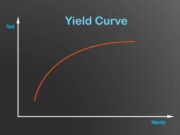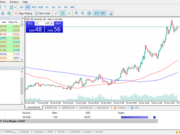
What is a sweep account and how can it help you manage your money more effectively
A sweep account is a type of bank account that automatically transfers any funds above a certain amount into a savings or investment account. This helps to ensure that you are always making the most of your money by keeping it in an account where it can earn interest, rather than letting it sit idle in a checking account. Sweep accounts can be very helpful in managing your finances, as they allow you to easily set aside money for future goals without having to think about it. Additionally, sweep accounts can help you avoid overdraft fees by transferring funds into your checking account when it reaches a low balance. If you are looking for a way to better manage your money, a sweep account may be right for you.
How to set up a sweep account
Setting up a sweep account is a great way to automatically transfer funds from your checking account to your savings account on a regular basis. This can help you build up your savings more quickly, and it can also help you avoid overdraft fees if you accidentally spend more than you have in your checking account. To set up a sweep account, you will need to contact your bank or credit union and ask about their Sweep program. Once you have enrolled, you will need to decide how much money you want to transfer from your checking account to your savings account each month.
You can typically choose to transfer a fixed amount of money or a percentage of your checking account balance. Once you have made your choice, the funds will be transferred from your checking account to your savings account on the same day each month. If you ever need access to the funds in your sweep account, you can simply withdraw them from your savings account like any other funds. Sweep accounts are a great way to automatically save money each month, and they can help you reach your financial goals more quickly.
The benefits of having a sweep account
A sweep account is a type of savings account that automatically transfers any money left over in your checking account into your savings account at the end of each day. This can be a great way to boost your savings without having to think about it. You can still access the money in your sweep account if you need to, but it can help you avoid the temptation to spend it all. Sweep accounts can also help you earn more interest on your money, since it will be moved into your savings account where it can grow uninterrupted. In addition, sweep accounts can help to protect you from overdraft fees by ensuring that there is always enough money in your checking account to cover any potential expenses. Overall, a sweep account can be a helpful tool for anyone who wants to save more money.
How to use a sweep account to pay bills and save money
The purpose of a sweep account is to help people save money and earn interest on their balances. When deciding how much to transfer into the sweep account, people should consider their regular monthly expenses, such as rent, utilities, and groceries. They should also consider their debt obligations, such as credit card payments and student loans. By transferring enough money to cover these expenses, people can make sure that they always have enough cash on hand to meet their financial obligations. Any money left over in the sweep account can be used to save for future goals, such as a down payment on a house or retirement. Sweep accounts are a helpful tool for people who want to make the most of their money.
Tips for using a sweep account to manage your finances
Sweep accounts can be a helpful tool for managing your finances and ensuring that you always have emergency funds available. Here are a few tips for using a sweep account:
1. Decide how much you want to transfer. A good rule of thumb is to transfer an amount equal to 1-2% of your paycheck each time.
2. Pick a schedule that works for you. Most sweep accounts allow you to choose how often the transfers occur, so you can select a schedule that fits your needs.
3. Set up automatic payments. If you have bills that are always the same amount, such as a car payment or mortgage, you can set up your sweep account to make the payment automatically. This will help to ensure that you never miss a payment and incur late fees.
4. Review your account periodically. Although sweep accounts can help to automate your finances, it’s still important to check in on your accounts regularly to make sure everything is on track.
The disadvantages of a sweep account
There are some disadvantages to using a sweep account. First, the interest rate on sweep accounts is often lower than the rate on regular savings accounts. This means that you may not earn as much interest on your money. Second, sweep accounts often have monthly maintenance fees that can eat into your savings. Finally, if you need to access your funds quickly, you may be subject to a penalty for withdrawing money from your savings account before a certain period of time has passed. For these reasons, it is important to consider the pros and cons of using a sweep account before deciding if it is right for you.
How to choose the best sweep account for you
When it comes to choosing a sweep account, there are a few things you need to take into account. The first is what type of account you need. If you are simply looking to save money, then a high yield savings account may be the best option for you. However, if you are also looking to earn interest on your deposited funds, then you may want to consider a money market account or a certificate of deposit. The second thing to consider is what bank or credit union offers the best interest rates and fees. Once you have done your research, you will be able to choose the best sweep account for your needs.
How to close a sweep account
If you’re interested in closing your sweep account, there are a few things you’ll need to do. First, you’ll need to withdraw any funds that are currently in the account. You can do this by transferring the funds to another account or by requesting a check from the bank. Once the account is empty, you’ll need to contact the bank to close the account. In most cases, you can do this over the phone or online. Be sure to have your account information handy so that the bank can confirm that you are the owner of the account. Finally, be sure to cancel any automatic payments or transfers that are set up to come from your sweep account. Once you’ve done all of these things, your sweep account will be closed.


































